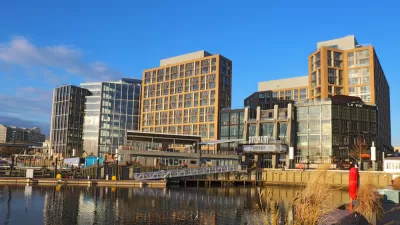Trends in Washington D.C. housing affordability is similar to other cities around the country, but is also unique in how swiftly the housing market has shifted.
"Back in 2005, before the new apartments went up in NoMa, and along 14th Street, and near the Nationals' ballpark, there was more housing in D.C. renting for less than $500 a month than for more than $1,500 [inflation-adjusted, 2012 dollars]," according to Emily Badger. Since then however, the market has been flipped upside down. "By 2012, the most expensive rental units outnumbered the cheapest ones — by more than a three-to-one ratio."
Badger explains the forces driving the change: "The changing shape of the city's housing over this short time reflects two powerful trends that are playing out in other big cities, too: Housing that was once more affordable has grown less so, while most of the new housing that's been built has catered to wealthier (and newer) residents."
Badger goes on to provide insight into a new study by the Urban Institute called "Washington D.C.: Our Changing City," which shows how critical the rental market is to understand the evolution of Washington D.C. Also cited is data from NeighborhoodInfoDC showing "that nearly every corner of the city has increased its housing supply." That new supply, however, has not been sufficient in maintaining previous levels of affordability given the large-scale influx of upper-income, childless residents.
FULL STORY: How high-cost housing conquered D.C. in a single decade

Alabama: Trump Terminates Settlements for Black Communities Harmed By Raw Sewage
Trump deemed the landmark civil rights agreement “illegal DEI and environmental justice policy.”

Planetizen Federal Action Tracker
A weekly monitor of how Trump’s orders and actions are impacting planners and planning in America.

Why Should We Subsidize Public Transportation?
Many public transit agencies face financial stress due to rising costs, declining fare revenue, and declining subsidies. Transit advocates must provide a strong business case for increasing public transit funding.

Understanding Road Diets
An explainer from Momentum highlights the advantages of reducing vehicle lanes in favor of more bike, transit, and pedestrian infrastructure.

New California Law Regulates Warehouse Pollution
A new law tightens building and emissions regulations for large distribution warehouses to mitigate air pollution and traffic in surrounding communities.

Phoenix Announces Opening Date for Light Rail Extension
The South Central extension will connect South Phoenix to downtown and other major hubs starting on June 7.
Urban Design for Planners 1: Software Tools
This six-course series explores essential urban design concepts using open source software and equips planners with the tools they need to participate fully in the urban design process.
Planning for Universal Design
Learn the tools for implementing Universal Design in planning regulations.
Caltrans
Smith Gee Studio
Institute for Housing and Urban Development Studies (IHS)
City of Grandview
Harvard GSD Executive Education
Toledo-Lucas County Plan Commissions
Salt Lake City
NYU Wagner Graduate School of Public Service





























